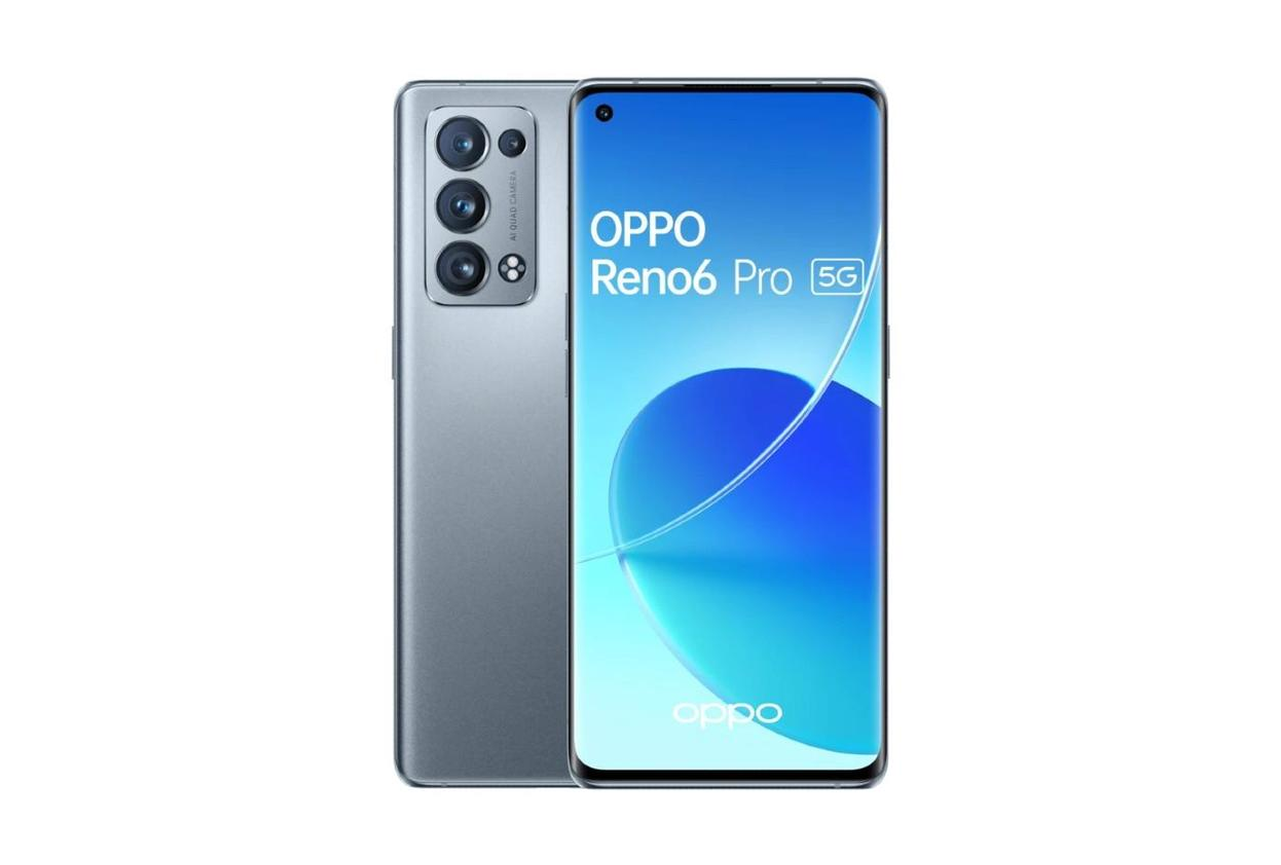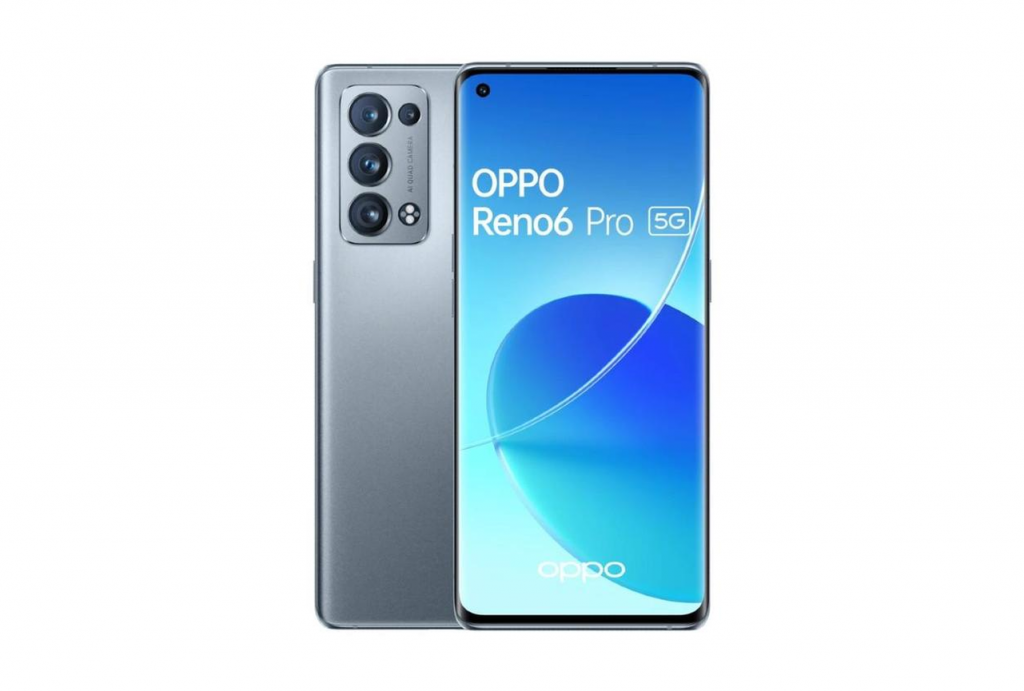The Oppo Reno6 Pro 5G appeared on the European market in September 2021. It fits in our Premium ($600-799) segment and accordingly comes packed with all kinds of attractive features. Let’s take a look at some of its key battery test results.
Key specifications:
- Battery capacity: 4500 mAh
- 65W charger
- 6.5-inch, 1080 x 2400, 90 Hz OLED display
- Snapdragon 870 5G (7 nm) chipset
- Tested ROM / RAM combination: 256 GB + 12 GB
About DXOMARK Battery tests: For scoring and analysis in our smartphone battery reviews, DXOMARK engineers perform a variety of objective tests over a week-long period both indoors and outdoors. This article highlights the most important results of our testing. (See our introductory and how we test articles for more details about our smartphone Battery protocol.)
Test summary
Scoring
Sub-scores and attributes included in the calculations of the global score.

Oppo Reno6 Pro 5G


Key performances
These key points are derived from the lab measurements during testing and do not figure into the overall score. The lab measurements, however, are used for the overall score.
 27th
27th
 2nd
2nd
Pros
- Good charging time, reaching 80% in 22 minutes
- Excellent charging efficiency
- Above-average autonomy for its segment
- Good linearity (reliable battery charge indicator)
Cons
- High power consumption during nights and in idle mode
- High residual power consumption when device is still plugged in
- No wireless charging available
As of this writing, the Oppo Reno6 Pro 5G has the best battery performance in the Premium segment.
We compared the Oppo Reno6 Pro 5G’s performance in several key categories with two other devices in our Premium segment, the OnePlus 9 and the Xiaomi Mi 11; battery capacity, tested charger, display type and resolution, and processor specifications for the three devices are shown in the table below.
| Oppo Reno6 Pro 5G | OnePlus 9 | Xiaomi Mi 11 | |
| Battery capacity (mAh) | 4300 | 4500 | 4600 |
| Charger | 65W
(no wireless) |
65W
(wireless 15W) |
55W
(wireless 50W) |
| Display type | OLED | OLED | OLED |
| Display resolution | 2400 x 1080 | 2400 x 1080 | 3200 x 1400 |
| Chipset | Qualcomm Snapdragon 870 5G | Qualcomm Snapdragon 888 5G | Qualcomm Snapdragon 888 5G |
Autonomy (62)
How long a battery charge lasts depends not only on battery capacity but also on other aspects of the phone’s hardware and software. The DXOMARK Battery autonomy score is composed of three performance sub-scores: (1) Stationary, (2) On the go, and (3) Calibrated use cases. Each sub-score comprises the results of a comprehensive range of tests for measuring autonomy in all kinds of real-life scenarios.
Oppo Reno6 Pro 5G achieves the best overall autonomy among its competitors, thanks in particular to its excellent performance in calibrated mode.
However, the OnePlus 9 delivers 5 more hours of moderate-use autonomy than the Oppo device, thanks to lower discharge current during the night and in on the go testing. Although the Xiaomi Mi 11 has a larger battery capacity (4600 mAh) than the other two devices, the Reno6 Pro 5G provides 9 hours more autonomy, mainly due to its lower screen resolution and better power optimization across the board. (The Mi 11 is of course even further behind the OnePlus 9.)
In terms of linearity, the Oppo Reno6 Pro 5G has very good behavior: when its indicator shows 20% of the charge remaining, there is actually 23.9% left.
Battery Life (moderate)
 82nd
82nd
Battery Life (moderate)
 15th
15th

Stationary
Oppo Reno6 Pro 5G
59
104
A robot housed in a Faraday cage performs a set of touch-based user actions during what we call our “typical usage scenario” (TUS) — making calls, video streaming, etc. — 4 hours of active use over the course of a 16-hour period, plus 8 hours of “sleep.” The robot repeats this set of actions every day until the device runs out of power.
Both the Oppo Reno6 Pro 5G and the OnePlus 9 have the same battery capacity (4500 mAh) and perform very similarly in TUS (57 hour 12 minutes vs. 57 hours 24 minutes, respectively), far outdistancing the Xiaomi Mi 11’s roughly 40 hours. While the Reno6 Pro 5G shows a drop of 2.67% at night, the Mi 11 loses 3.5% at night.

On the go
Oppo Reno6 Pro 5G
61
96
Using a smartphone on the go takes a toll on autonomy because of extra “hidden” demands, such as the continuous signaling associated with cellphone network selection, for example. DXOMARK Battery experts take the phone outside and perform a precisely defined set of activities while following the same three-hour travel itinerary for each device.
The Reno6 Pro 5G does very well for 3G calls, particularly compared to other products in the premium segment (including the competitors in this review), though it lags slightly behind for camera use.

Calibrated
Oppo Reno6 Pro 5G
72
100
For this series of tests, the smartphone returns to the Faraday cage and our robots repeatedly perform actions linked to one specific use case (such as gaming, video streaming, etc.) at a time. Starting from an 80% charge, all devices are tested until they have expended at least 5% of their battery power.
The Oppo Reno6 Pro 5G delivers a strong performance in all calibrated use cases.
Charging (103)
The DXOMARK Battery charging score is composed of two sub-scores, Full charge and Quick boost. Full charge tests assess the reliability of the battery power gauge; measure how long it takes to charge a battery from zero to 80% capacity and from 80 to 100%; and measure how long and how much power the battery takes to go from an indicated 100% to an actual full charge. With the phone at different charge levels (20%, 40%, 60%, 80%), Quick boost tests measure the amount of charge the battery receives after being plugged in for 5 minutes.
Unlike its competitors, the Oppo Reno6 Pro 5G does not offer wireless charging.

Full charge
Oppo Reno6 Pro 5G
99
121
Oppo Reno6 Pro 5G puts in an excellent wired charging performance, reaching 80% in 22 minutes — a difference of less than a minute between it the OnePlus 9, with both devices endowed with the same battery capacity and a 65W charger. The Xiaomi Mi 11 takes more than 30 minutes to reach an 80% charge.
Charging Time 0-80%
 19th
19th
Charging Time 0-80%
 8th
8th

Quick boost
Oppo Reno6 Pro 5G
98
111
The Oppo Reno6 Pro 5G leads the pack at all stages (20%, 40%, 60%, 80%) in our 5-minute quick boost charging tests, offering on average more than 7 hours 30 minutes of autonomy vs, 6 hours 50 minutes for the OnePlus 9 and at best just over 3 hours (at 40%) for the Xiaomi Mi 11.
| Oppo Reno6 Pro 5G (Snapdragon) | OnePlus 9 | Xiaomi Mi 11 | ||
| Autonomy boost (hh:mm) | 20% | 8:54 | 8:26 | 2:52 |
| 40% | 7:32 | 5:59 | 3:09 | |
| 60% | 5:39 | 5:28 | 2:54 | |
| 80% | 4:08 | 4:02 | 1:51 | |
| Percentage boost | 20% | 23.8 % | 23 % | 11.2 % |
| 40% | 20.2 % | 16.3 % | 12.3 % | |
| 60% | 15.1 % | 14.9 % | 11.3 % | |
| 80% | 11.1 % | 11 % | 7.3 % | |
| Energy consumed | 20% | 5042 mWh | 4923 mWh | 2674 mWh |
| 40% | 4272 mWh | 3491 mWh | 2945 mWh | |
| 60% | 3206 mWh | 3188 mWh | 2709 mWh | |
| 80% | 2344 mWh | 2354 mWh | 1735 mWh |
Efficiency (95)
The DXOMARK power efficiency score consists of two sub-scores, Charge up and Discharge rate, both of which combine data obtained during robot-based typical usage scenario testing, outdoor mobility testing, charging evaluation, and power measurements, and then take into consideration the device’s battery capacity.
The Oppo Reno 6 Pro is among the most efficient devices in our database and in its segment.

Charge up
Oppo Reno6 Pro 5G
84
105
Among its rivals, on the one hand, the Oppo Reno6 Pro 5G has the best charge up efficiency (82.2% vs. 81.3% for the OnePlus 9 and 74.5% for the Xiaomi Mi 11). On the other hand, across our entire database, the Oppo device is one of the very highest for residual power consumption when the phone is plugged and fully charged (trickle charge).

Discharge
Oppo Reno6 Pro 5G
94
121
A very well-designed device, the Oppo Reno6 Pro 5G shows particularly optimized power consumption when streaming video and playing videos, as well as when gaming. Its only weak point in discharge efficiency is its power consumption during the night.
Conclusion
One of its only drawbacks is its lack of wireless charging, which many other smartphones in this segment offer. Overall, though, the Oppo Reno6 Pro 5G is a well-balanced device, with excellent power optimization as well as excellent charging time.

 English
English 中文
中文

DXOMARK invites our readership (you) to post comments on the articles on this website. Read more about our Comment Policy.